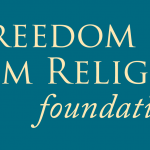Delving into new rep, mastering the familiar
We like our ensembles to take on new and unusual music. Maybe one of the reasons they don’t do that more often is that people such as I say: “Very interesting, but the performance isn’t quite solid yet.” That statement applies to two of three pieces the Prometheus Trio played Monday night (and will play again at a matinee at 11 a.m. Tuesday, Dec. 6).
Violinist Timothy Klabunde, cellist Scott Tisdel and pianist Stefanie Jacob opened with the Trio No. 9 in G, Opus 27, by Georges Onslow (1784-1853). I had never heard of Onslow, much less heard any of his music. It seems that he limited himself to chamber works, especially the piano trio.
The four-movement trio at hand sounds a lot like Chopin, with its elaborate piano filigree, with sudden outbreaks of Schumann. The players had the notes under their fingers, but didn’t quite know what to do with Onslow’s abrupt shifts between the delicate, intimate sort of Chopinesque Romanticism and the Schumannesque stress and strain. The Prometheans instinctively filled the gap with raw energy. In doing so they leveled out Onslow’s highs and lows, when I suspect extremes are the whole point of it.
I’m not so sure about the piece itself. The Snidely Whiplash melodrama of the middle section of the second movement struck me as preposterous. But perhaps after the trio lives with this piece for a while and brings it back with a clearer and more subtle interpretation, they’ll convince me.
The players threw themselves into each passing moment and mostly found the nuance in those moments and realized the phrases fully. Here and there, however, they just pushed hard on an unsettled bit, and I think they can still shape their effort in ways that make the big contours of the music more legible. Jacob mentioned that they’re enamored of Bridge’s music and want to play more of it. I want to hear them do it, both because the composer is of interest and because I want to hear their understanding of his music grow.
Every chamber musician grows up with Dvorák’s Trio in E minor, Opus 90 (“Dumky”). Familiar as it is, the Dumky is a formal labyrinth, more complex than either of the above pieces. But here, Klabunde, Tisdel and Jacob knew exactly what they intended to do with every bar and how that bar fit into the big picture. This assurance expressed itself in a reading that got to both the high-toned Romantic ardor and the peasant vigor in this music. The players managed and shaped moments into clear paragraphs that made it easy to locate yourself in the forms. They made it sound easy, as they never had to overreach or grope to fill an interpretive vacuum. The Dumky is hallowed, familiar ground, and they know every path in the forest.
The Prometheus Trio gave this program at the Wisconsin Conservatory of Music, where it is in residence. The program will be repeated at 11 a.m. Tuesday, Dec. 6. For tickets, call 414 276-5760.





















thanks for coming, Tom!!
That cute little oldies.onslow has great opportunities for brilliant rollimg scale technique on the piano such as one finds in Chopin’s opus 58:4 on those rare occasions when that latter work is illumined by its full measure of intense, unbroken legato.
The Bridge has this 50’s-ish cinematic wrenchiness that gives it the option of being placed near, if not within, the range overstatement for the benefit of its sexual maturity while not losing the balance of the line.
The Dvorak is a cozy, swingy, warmish ethnic-effects thingie.